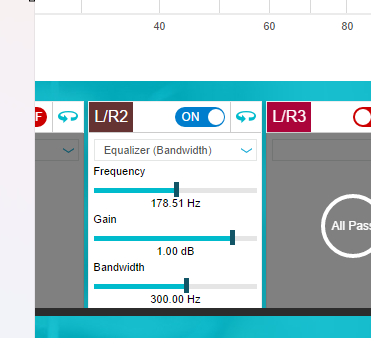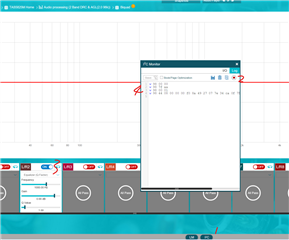Tool/software:
Hi
We have made a system for a customer that has been in production for many years using the TAS5825M. We are very happy with the solution.
Now, the customer want us to make a equalizer and I hope we can get some help from PPC (purepath) to solve the problem.
We are not audio specialist but has general knowledge of filters, both analog and digital.
here is what i have done so far:
I run a test with one only L/R2 active.

With this setting i generate a head file (#1)
Then, i change the gain to 0 and generate a new head file (#2) and compare the two files

What i can see is that 6 registers have a change in values when i change the gain from one to zero.
From this i have the following question.
How to calculate the values for this registers ?
Is there a quick guide or a document for dummies that can help us solve this task?
Our plan is only to change the gain in the equaliser and hopefully get the rest of the settings from the ppc3
Thanks
best regards
Mikal


